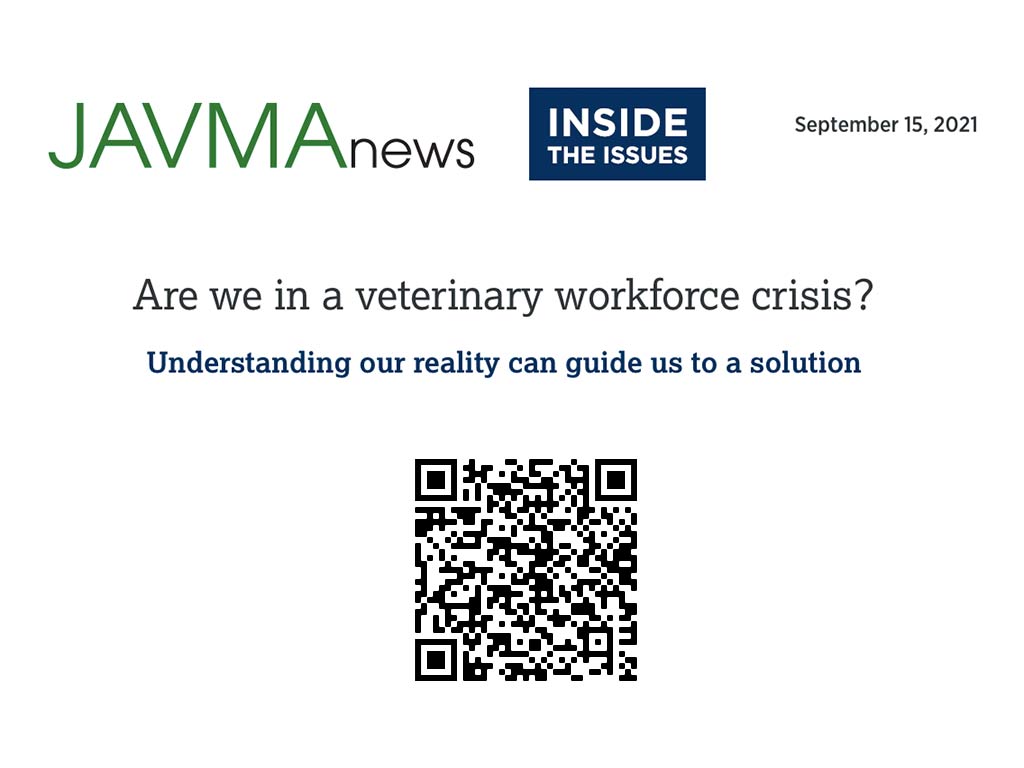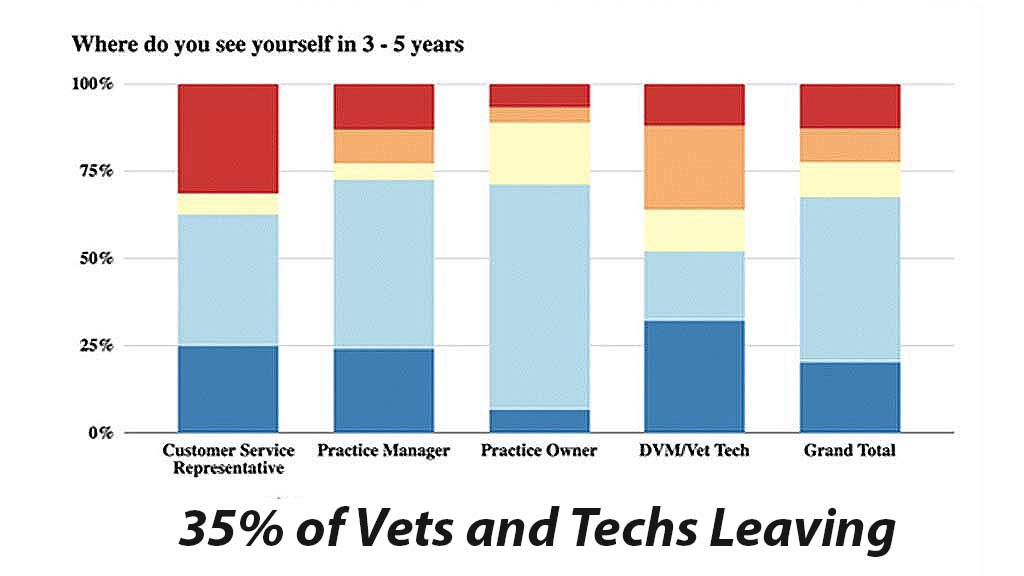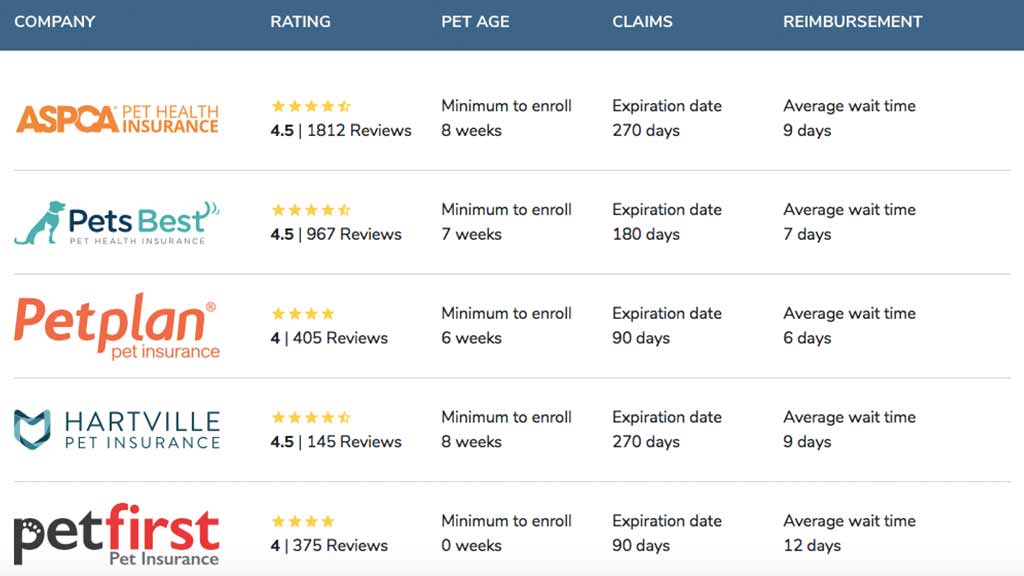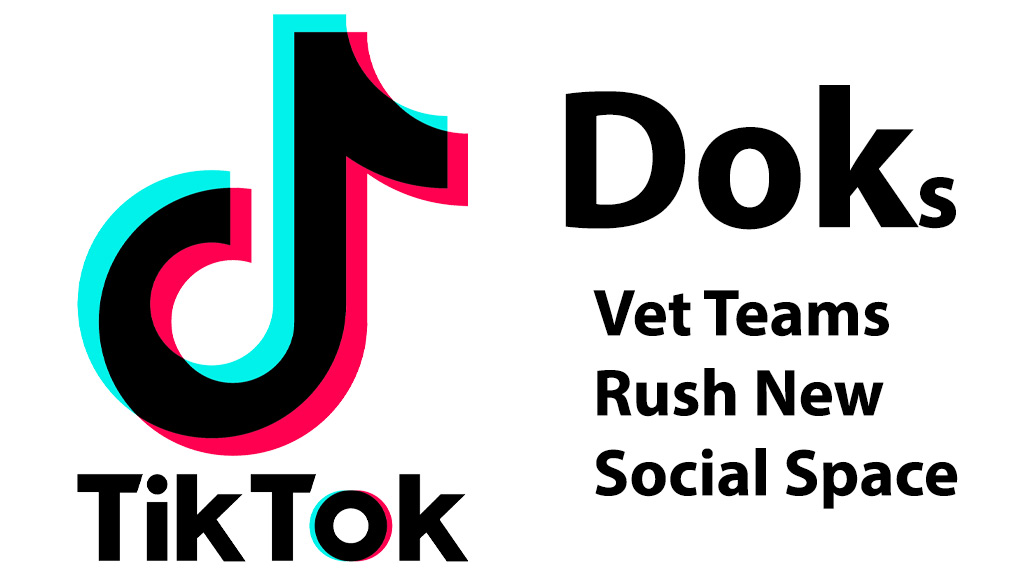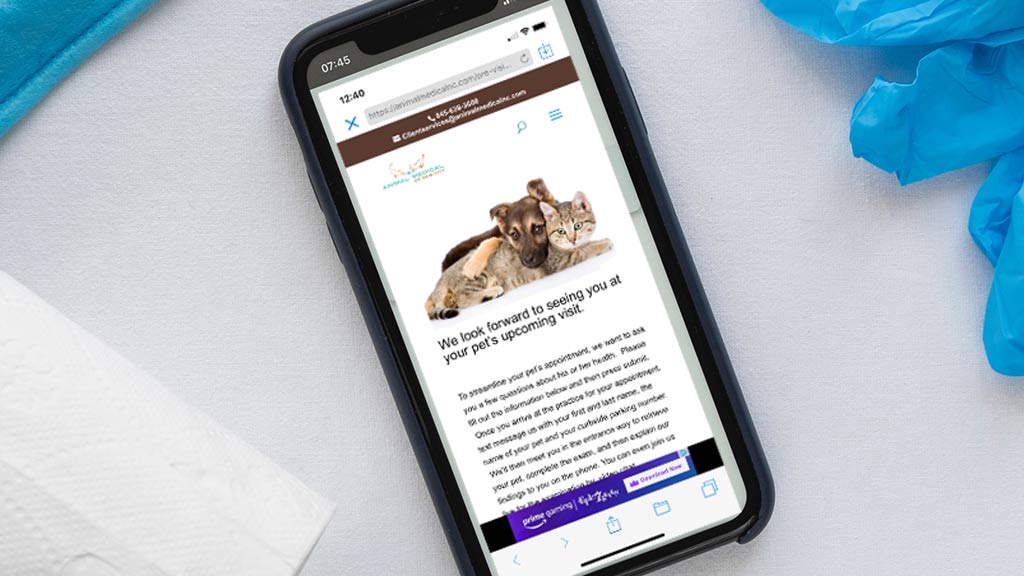35% of vets and techs will quit in 3-5 years
Results from a national survey conducted by VitusVet show that team stress levels remain high, that team members don’t believe things are going to get better any time soon, and that 35% of all vets and vet techs plan on leaving their current jobs or the profession entirely in the next 3 to 5 years.
Increase in Already-High Stress Levels
The national survey conducted in April of 2021 polled receptionists, technicians, doctors and owners working in practices with 1 to 7+ doctors. Respondents were asked to gauge their stress levels before the pandemic, during the height of the pandemic, and then weigh in on how they felt in the present. Nearly 50% of respondents reported some-to-a lot of stress before the pandemic. That number jumped to 80% during the pandemic’s gloomiest months in the latter part of 2020. At present, respondents report that stress levels remain unchanged. Less than 1% of those polled said they had no work-related stress.
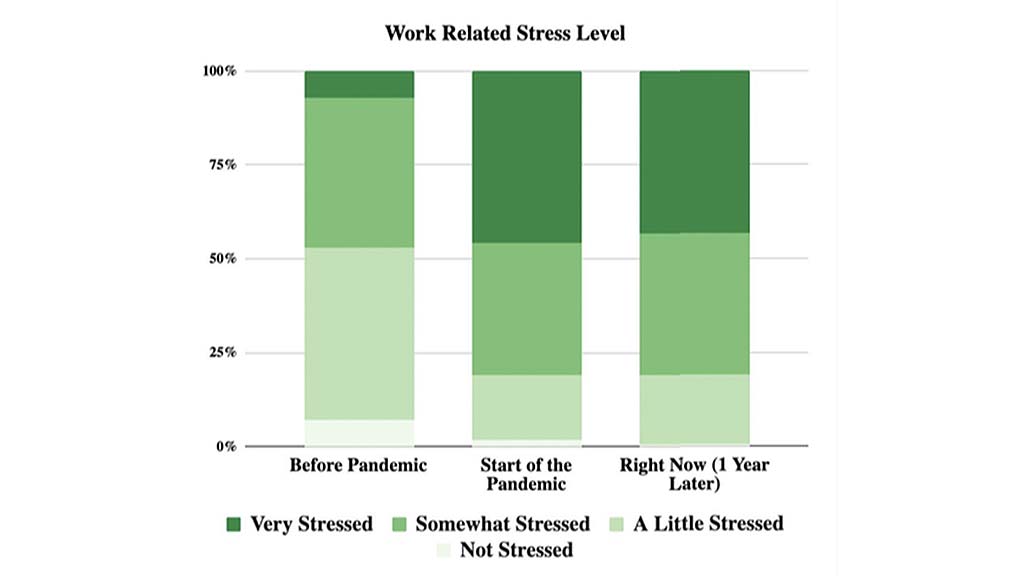
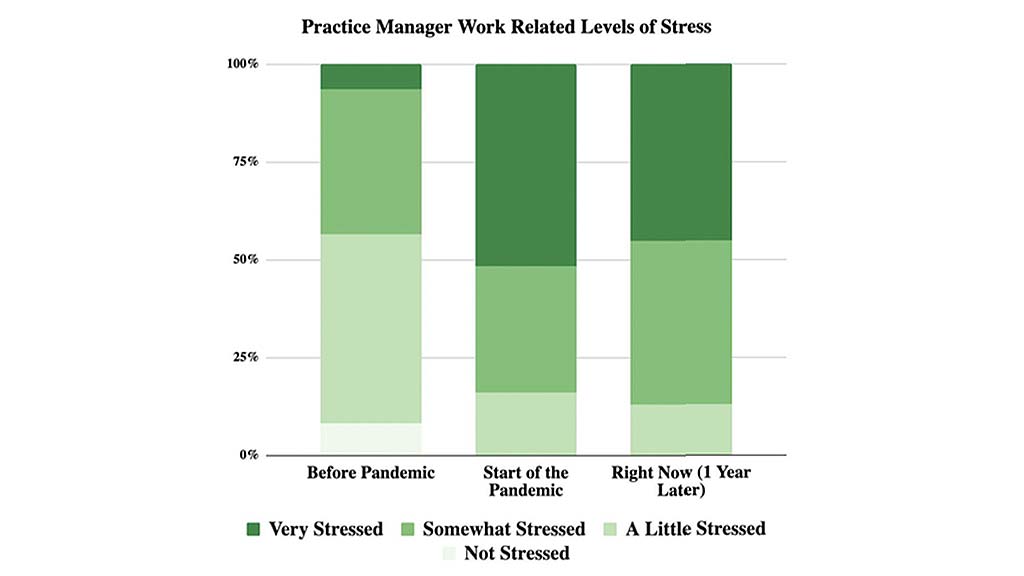
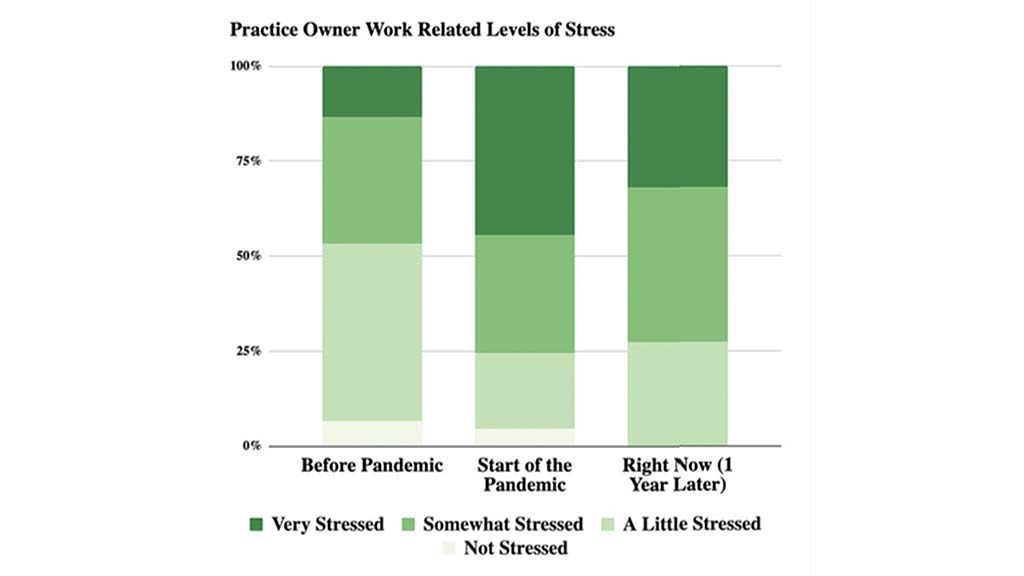
Data was organized by job. On the left are the responses by managers, on the right are the responses by practice owners.
25% of Team Members Poised to Quit
Respondents were asked where they see themselves in 3-5 year’s time. In total, nearly 25% of respondents said they would either leave the profession or their current place of employment, but that number expands to almost 35% if you focus exclusively on techs and veterinarians. That information was especially surprising to Evan Hannscott, Director of Data Science at VitusVet.
“The most eye opening result is that DVMs & tech’s appear to be flight risks. The two cohorts [veterinarians and technicians] were analyzed both combined and separate given they are similar in that both jobs require specialized training. Within the combined DVM/tech cohort, about 35% will either leave the profession entirely or leave their job at their current practices. Only 30% of this cohort plan on remaining at their current practice with the remaining 35% ‘unsure’.” Evan Hannscott, Director of Data Science, VitusVet
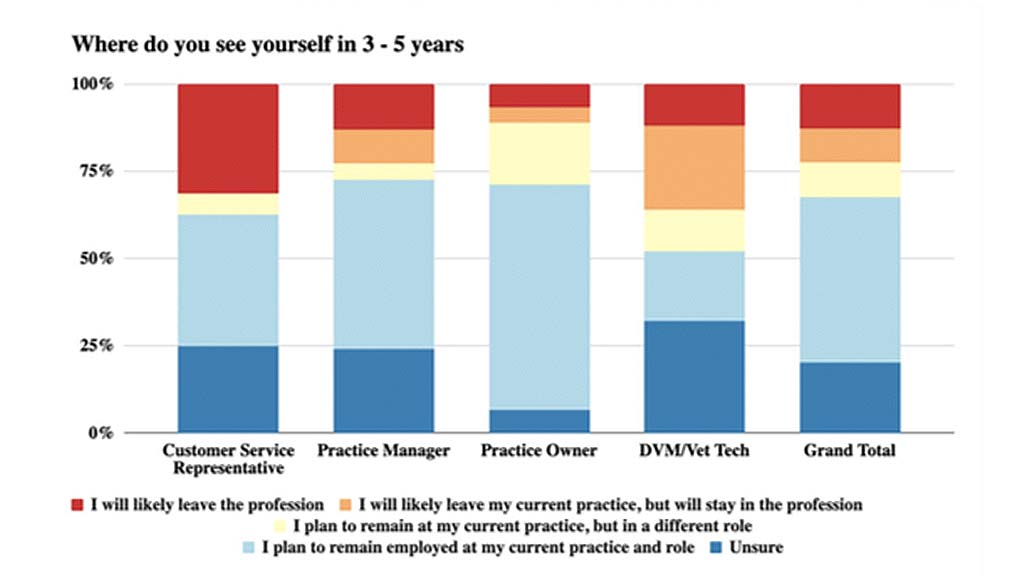
$1000.00
$1000.00 referral fee for veterinarian applicants. Sign on bonuses also available. More.
Sources of Stress Identified
Respondents were asked to choose from a list of potential sources of stress that covered time constraints, communication (internal and with clients), and caseload. Because those surveyed could choose multiple answers, results add up to more than 100%. The top four sources of stress that the respondents identified were: Not enough time (50%), callouts and staff shortages (49%), excessive caseload (48%), and rude clients (38%).
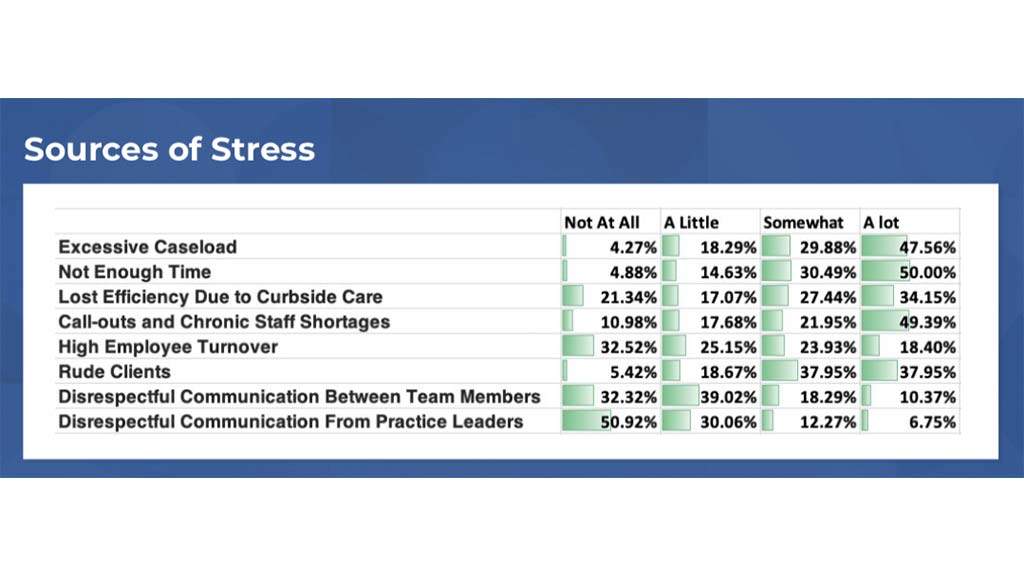
Is More, More?
Presumably one of the reasons why employers turn a blind eye to increases in stressors like long hours and higher workload is because they see such phenomenon as drivers of profit. Not so says Stanford professor Jeffrey Pfeffer. According to Mr. Pfeffer’s book Dying for a Paycheck, there is an inverse relationship between hours worked to productivity. This is to say that higher overtime usually equates to a decrease in productivity. Moreover, jobs with higher work demands have staggeringly higher excess employee health care costs. Think increased alcohol and drug use, overeating, decrease in exercise, and strained personal relationships of workers to their friends and family.
Additional Sources of Stress
To close in on additional reasons for stress, respondents were asked to grade certain work factors known to contribute to stress levels. Fewer than 25% of respondents agreed or strongly agreed with the statement, “I have a healthy work/life balance”; 90% said their workload had increased during the pandemic; 72% agreed or strongly agreed that they often have to stay late; and only 30% agreed with the statement, “I have enough time to get all my work done”.
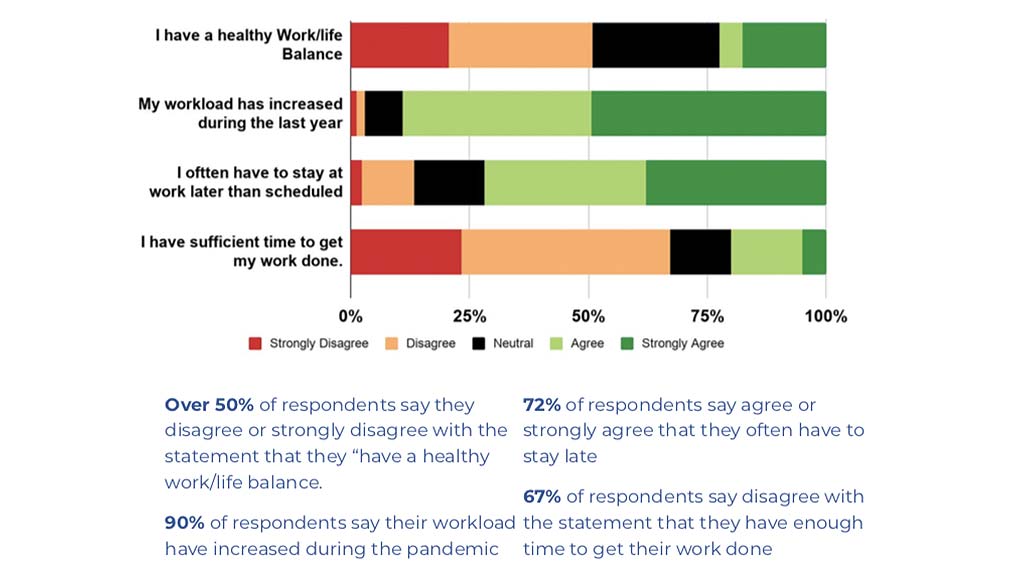
Increased Pay Not Working
Often employers think that they can pay their way out of employee unhappiness. Results countered that claim. Nearly 50% of employers increased wages during the pandemic. According to Evan Hannscott, “The most common technique to try to adapt their team to higher levels of stress is to pay the employees more, but the data suggests that higher pay did not solve the problem.”
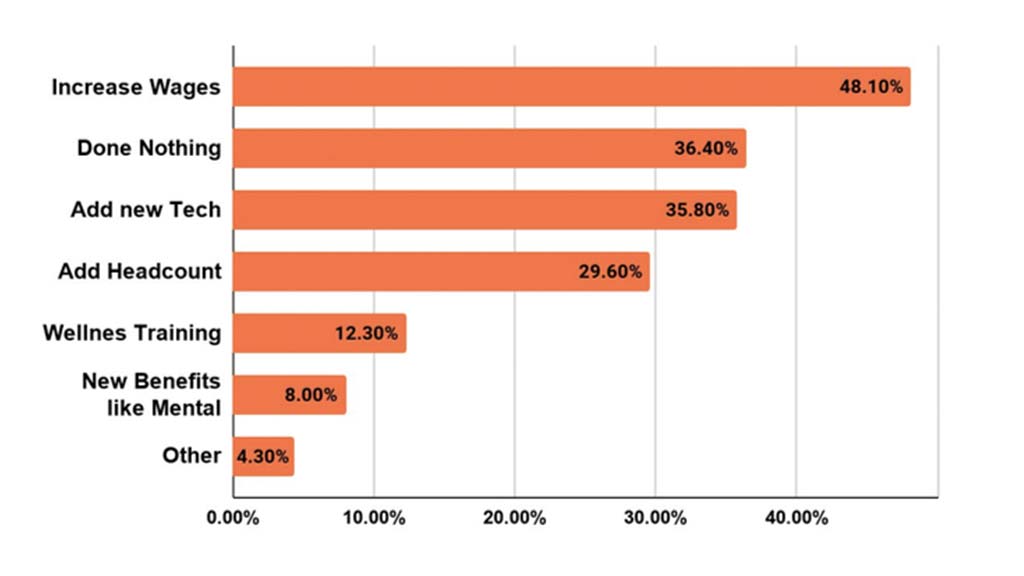
Interpretation
Results support recurring complaints inside our industry: teams are in danger of burnout and in need of effective ways to manage stress at their workplaces. The results show that chronic staff shortages, high demand for veterinary care, inefficiency, and job dissatisfaction related to demanding pet-owners, time shortages, and long hours are the top sources of workplace strain. In the past, we’ve multi-tasked and/or hired our way out of these mires, but it doesn’t appear that either of these are viable options any longer. We need new ways of attacking this chronic issue.
Technology To Reduce Workload
Since we can’t hire our way of excessive caseload and overtime hours, we need to increase efficiency. This means focusing our team members’ energies on client service and patient care and leveraging technology to do more of the background, administrative work related to both. Here are some ideas:
- Two-way texting: Can reduce the amount of time your team spends talking to clients by more than 75%. In polls conducted throughout 2020, this service was cited as the number one, time-saving solution for practice teams.
- One-touch pay: Cut out the hassle of calling for a credit card number or having a client stop off at the desk for payment. Give them a one-touch pay option that can be sent as a link to their phone. This strategy avoids the added price practices pay in ‘card not present’ credit card fees.
- Online Scheduling: Allows clients to book their own appointments directly into your practice software (with the appropriate restrictions and filters, of course).
- Telemedicine Follow-ups and Rechecks: These in-person appointments can commandeer 30 minutes of outpatient schedule time with little or negative ROI. Converting follow ups and rechecks to telemedicine (when appropriate) frees up valuable appointment slots and increases margin.
- Medical Records Management: Have a third party manage the hassle of retrieving a patient’s previous medical history and condense the information to save your doctors time.
- Digital Pre-visit Questionnaires: Electronic, pre-visit patient questionnaires can eliminate the five-to-ten minutes technicians spend taking a patient history. Questionnaires can be sent out with the appointment confirmation, filled out by the client on any smart device, and sent back to the practice with the touch of a button.
Other Solutions
Bash will discuss the additional ideas some of America’s best hospital teams have implemented to manage chronic staff shortages, higher caseload, and grumpy pet owners at this year’s FETCHDVM360 Conferences. You can use his promo code faculty10 for 10% off the cost of registration!
JAVMA shares data contradicting claims that 2020-21 has been busier
A recent JAVMApaper called “Are We a Veterinary Workforce in Crisis”1raised ire with some hospital leaders. On its surface, the commentary implied that the snarl of business rushing through our doors in 2020 and early 2021 was in some part imagined; that in fact pet adoption rates weren’t as high as the shrill media headlines seemed to indicate, nor were we that much busier than we had been in previous years.
In fairness, the article was a sober and thorough look at what may have been happening to our businesses underneath the huffs, puffs and mopped brows of burnt-out veterinary technicians and teams as a whole. But in the end, the clarity may have been moot. Veterinary professionals have been throwing their hands up against the onslaught of packed appointment schedules long enough that upstretched arms have turned into fists of protests. Regardless, if JAVMA and I disagree on how we got here, we are in agreement on how to get ourselves out of the mess. Click on the link to read the entire article, but among the solutions posited by the AVMA authors are:
- Mine untapped efficiency opportunities at your practice
- Consider giving licensed veterinary technicians more of a role when interfacing with clients regarding pet medical issues. (Actually, the AVMA article is much bolder in its recommendations in this area, but I won’t spoil it for you. Check out the article!)
- Need your team to be more productive? Then foster talent and teams. Engaged individuals and groups are more productive and less likely to turn over.
- Be careful about overloading on veterinarians in 2021, when 2022 may bring a significant slow down in business to rumblings of a future inflationary/stagflation-ary economy.
Additional Reading
How They Did It
Small rural practices implement telemedicine services and clients love it!
